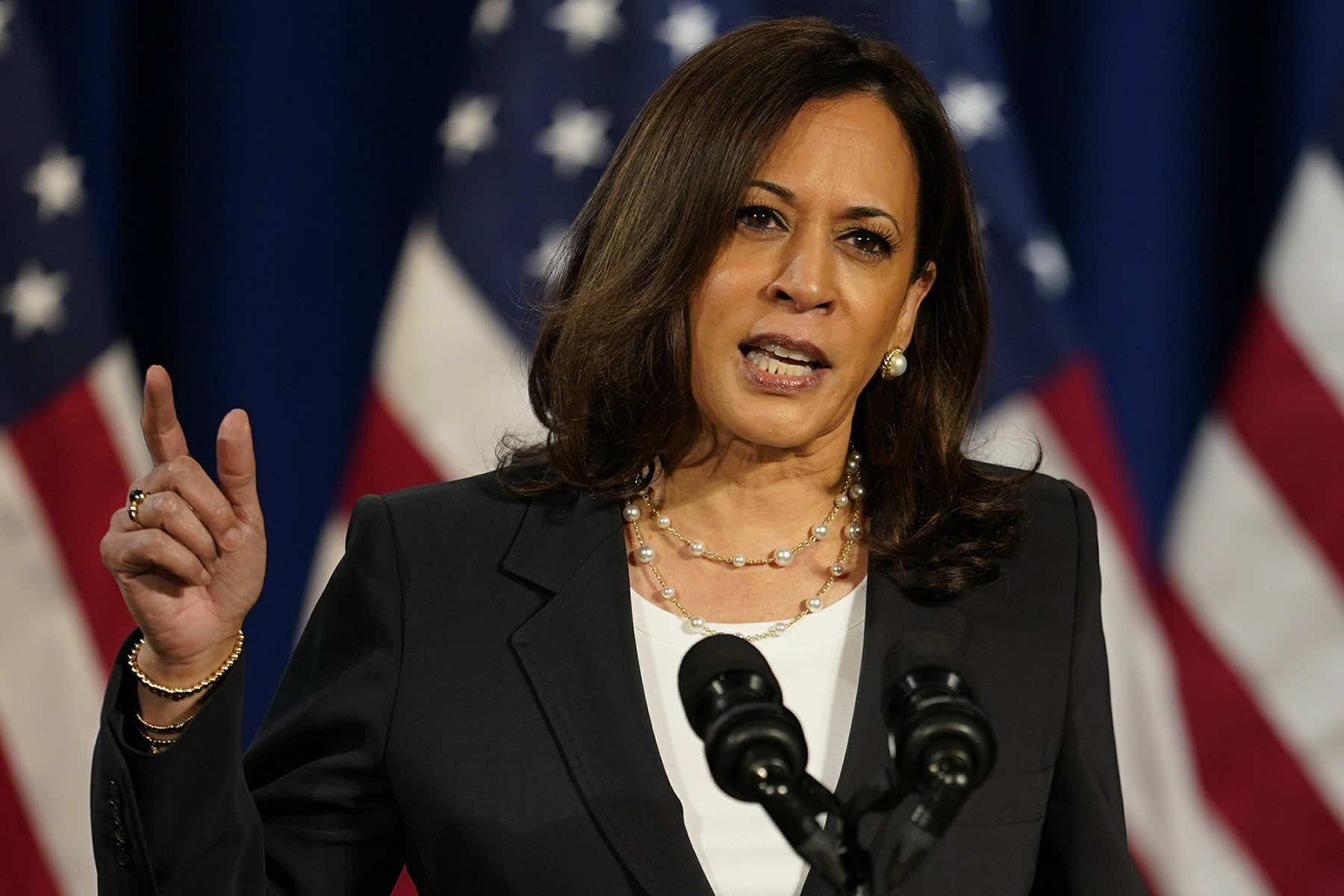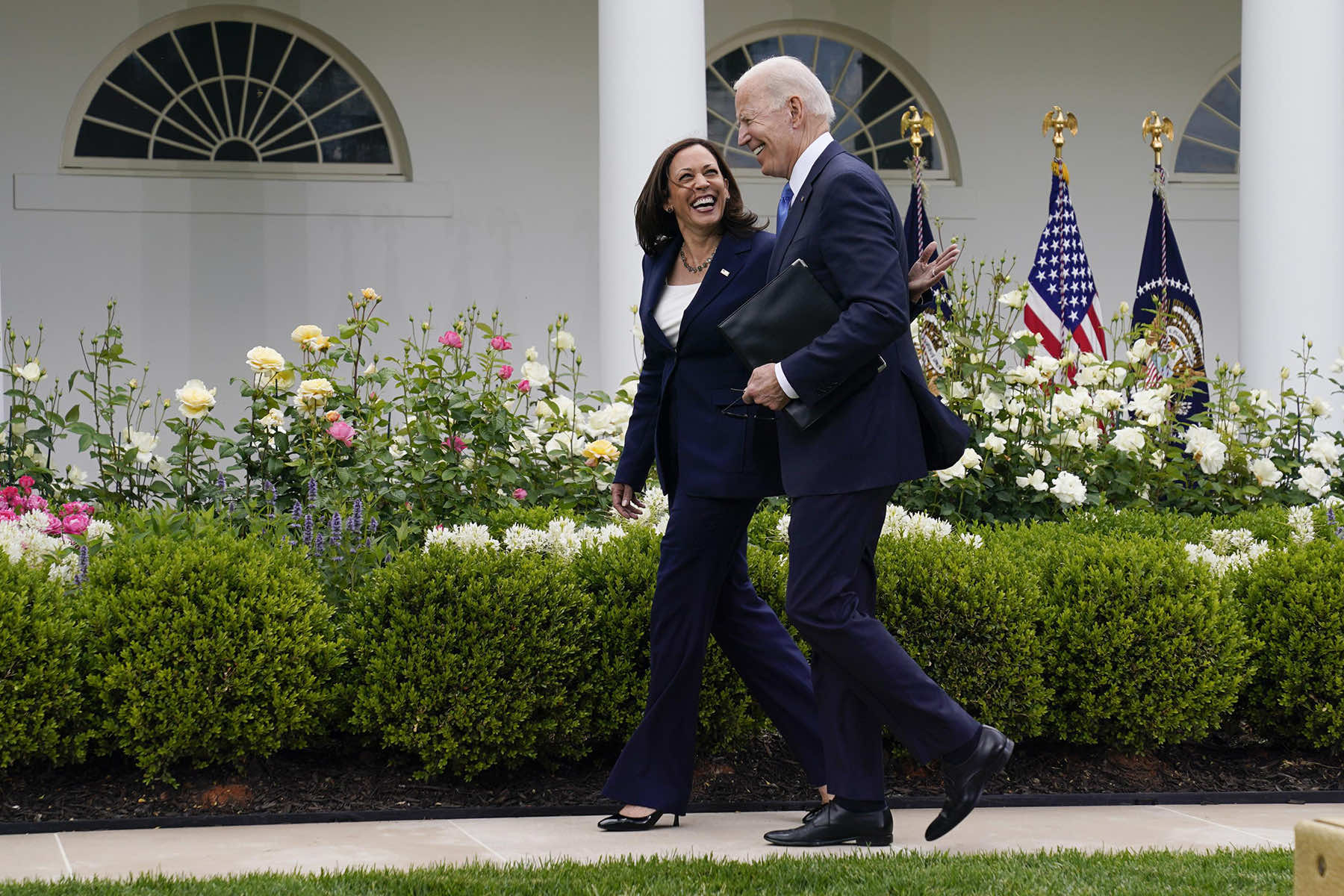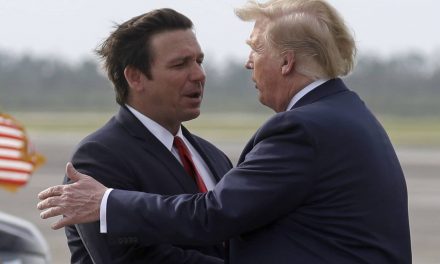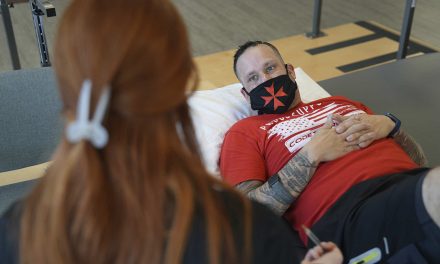
Vice President Kamala Harris needed to get to the U.S. Senate to break a tie. But first she had to avoid causing a traffic jam.
One more senator had to vote before Harris could end the impasse, and he was in Georgetown, on the opposite side of Washington. If Harris left in her motorcade, street closures would likely cut off his route to Capitol Hill. So she waited.
“I was on the phone with the senator’s staff telling them, you have to tell me when he’s in the car and when he’s crossed the threshold through downtown,” Kristine Lucius, former director of legislative affairs for Harris, recalled about the vote on an administration nominee last year.
Such has been the delicate balancing act for Harris, whose role as president of the Senate has been a defining feature of her first two years in office. With the help of careful scheduling — and even an eye on traffic patterns when necessary — she has swiftly outpaced her predecessors when it comes to breaking ties.
Now the pressure will be off. Senator Raphael Warnock’s victory in the Georgia runoff means Democrats will expand their majority to 51 seats. Although Harris may still get called upon, such as when senators are absent, the party will have a little more breathing room on close votes.
Senate Majority Leader Chuck Schumer, D-NY, said recently that his caucus “has been deeply grateful” for the “constant schedule juggling” by Harris.
“It’s part of her job. But I think she’s done a lot of other good things,” he said. “And now she’s going to have a little more time to do those things. Because the need for her to be here will be less.”
Vice presidents have an infamously sparse job description under the Constitution, and one of their only responsibilities is serving as president of the Senate. It has been a mostly ceremonial role in recent administrations. President Joe Biden didn’t have to break a single tie in his eight years as vice president.
Harris, a former senator from California, has had a much more hands-on experience because the chamber has been evenly divided in an era of sharp partisanship.
A dozen nominees would not have been confirmed without her vote. She also helped nudge the American Rescue Plan, a $1.9 trillion coronavirus relief measure, and the Inflation Reduction Act, the centerpiece of Biden’s domestic agenda, over the finish line.
All told, she has cast 26 tiebreaking votes. John C. Calhoun, who served as vice president under John Quincy Adams and Andrew Jackson, has the record for 31 — but that was over the course of nearly eight years, rather than the two by Harris.
“Floating holds” limiting travel were built into Harris’ schedule weeks in advance when there was a chance she would be needed on Capitol Hill, preventing her from straying far from Washington.
When she did travel, she tended to go on Mondays, Thursdays, or Fridays because most Senate votes were on Tuesdays and Wednesdays. And short hops to Baltimore or Richmond were preferable to flights around the country, which would make rushing back for a vote logistically complicated.
Senator Tim Kaine, D-VA, said, “Any time we were here, she had to be ready, because even things that might have seemed noncontroversial, appointments and stuff, could deadlock.” Harris was “never completely free to make other plans,” he said.
One of the exceptions was the Munich Security Conference in February, which Harris attended shortly before Russia invaded Ukraine.
“As soon as that was booked, the first person I talked to was not my husband about child care coverage, it was the majority leader’s chief of staff,” Lucius said. She had to make sure that Schumer knew he couldn’t schedule any tight votes then, “because that’s not something that you can fly home from.”
Sometimes there was a scheduling conflict. Harris was in Los Angeles for the Summit of the Americas when the Senate held a confirmation vote for a Labor Department official.
The nomination unexpectedly stalled without Harris available to break a tie, so Democrats tried again in September. They were successful, and Harris was not even needed as a tiebreaker.
“She’s been here when we need her,” said Sen. Patty Murray, D-WA. “We’ve accommodated her when it didn’t work out.”
Murray appreciates Harris’ trips to Capitol Hill for another reason besides tiebreakers. They’re opportunities to chat policy, from school buses to maternal health, with someone who is a heartbeat away from the presidency.
“It’s a connection you don’t often get with a vice president,” she said.
Joel K. Goldstein, a historian of the vice presidency, said Harris’ responsibility can be rewarding and frustrating.
“The upside is, she gets to be there when there’s something that’s important, and she casts a decisive vote,” he said. “The downside is, she has to be there.”
After all, the vice presidency can be a political springboard, and remaining tethered to Senate procedure is not usually an ambitious leader’s idea of a plum assignment.
But the perils of not being available have been apparent before, such as when the Senate was considering President Calvin Coolidge’s nominee for attorney general in 1925.
Believing he was not needed, Vice President Charles G. Dawes went to his hotel room for a nap. When he woke up, it was too late to rescue the nomination with a tiebreaking vote.
Although vice presidents have functioned as extensions of the presidency in recent history, they used to operate more independently from the White House, embracing their legislative role by regularly presiding over the Senate.
Sometimes they even voted against the president’s interests. In 1832, when Jackson chose Van Buren to be ambassador to Great Britain, Calhoun ensured the nomination failed by casting a tiebreaking vote against him.
Harris knew she would be called upon to break ties when she took office, and she did not seem to be looking forward to it.
Shortly before the inauguration, she wrote in the San Francisco Chronicle that there had been only 268 such votes since the country’s founding.
“I intend to work tirelessly as your vice president, including, if necessary, fulfilling this constitutional duty,” Harris wrote. “At the same time, it is my hope that rather than come to the point of a tie, the Senate will instead find common ground and do the work of the American people.”
Harris cast her first tiebreaking votes only two weeks after taking office. They took place before dawn at the end of a marathon voting session on the American Rescue Plan.
“All right, should I do this?” she said, tapping the ivory gavel a single time on the desk in front of her.
“The Senate being equally divided, the vice president votes in the affirmative and the concurrent resolution as amended is adopted,” she said, ensuring passage of the bill and drawing applause from Democrats.
As her number of votes ticked higher and higher, she has publicly embraced her role.
In a September speech at South Carolina State University, Harris noted she had cast more tiebreaking votes in a single term than any of her predecessors. The record was previously held by John Adams, the country’s first vice president.
“I think we should all fully appreciate how history can take a turn,” she said.















